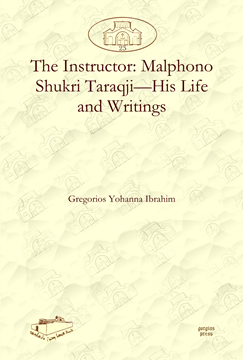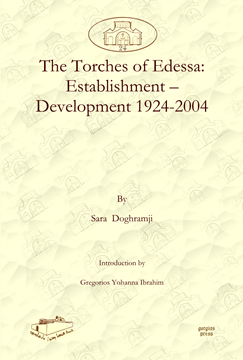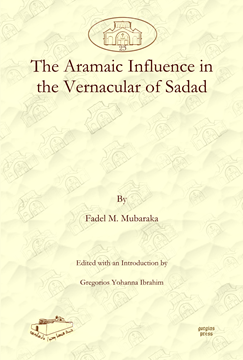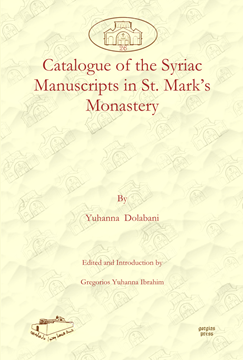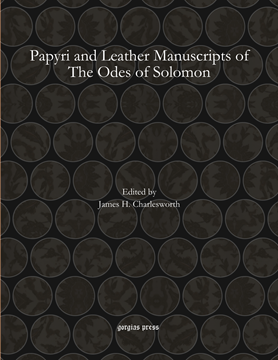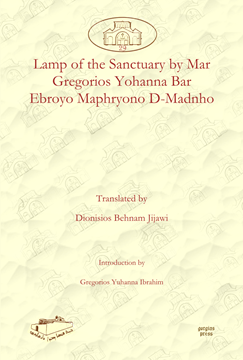Die Höllenfahrt der Istar, ein altbabylonisches Epos
Nebst Proben assyrischer Lyrik
Series: Analecta Gorgiana 175
ISBN: 978-1-60724-246-8
This volume contains Schrader’s study of the underworld journey of Ishtar. He examines this Old Babylonian epic together with samples from Assyrian poems. The text is given, along with a translation, commentary and glossary.
$68.00 (USD) $40.80 (USD)
Die Babylonisch-Assyrischen Vorstellungen vom Leben nach dem Tode
Series: Analecta Gorgiana 176
ISBN: 978-1-60724-247-5
In this brief study, Jeremias examines the representations of life after death in the Babylonian and Assyrian sources. The descent of Ishtar, basic concepts of the grave, descriptions of the afterlife and the realm of the blessed are all examined. The possibility of return from death and the biblical outlook on the subject are also part of the exploration.
$61.00 (USD) $36.60 (USD)
Malphono Shukri Taraqji—His Life and Writings
ISBN: 978-1-60724-248-2
Shukri Taraqji (1911-1982) was an important figure in the Syriac literary revival of the twentieth century and this small volume collects a number of his writings into one convenient place. An introduction by Bishop Gregorios Yohanna Ibrahim provides an account of Taraqji’s life and activities, both professional and ecclesiastical. This volume will be of great interest to anyone interested in the contemporary history of Syrian Orthodox Christianity, Syriac, and Middle Eastern Christianity.
$118.00 (USD) $70.80 (USD)
Establishment – Development 1924-2004
By Sara Doghramji; Introduction by Gregorios Yohanna Ibrahim
ISBN: 978-1-60724-249-9
After the expulsion of the Syrian Orthodox community from Edessa in 1924, they found refuge in Aleppo. One of the first things the community did upon its settling in Aleppo was found a school where its youth were taught the Syriac language and important melodies and prayers from the liturgy, among other things. This school was the ancestor of the Syrian Orthodox school of Aleppo which is today called by the name of Bani Taghlib, and in this book Sara Doghramji has given us a history of this institution, from its founding in 1927 to the present.
$171.00 (USD) $102.60 (USD)
The Aramaic Influence in the Vernacular of Sadad
By Fadel M. Mubaraka; Edited with an Introduction by Gregorios Yohanna Ibrahim
ISBN: 978-1-60724-250-5
Fadel Mubaraka has here given us a study of the linguistic survivals of Aramaic in the Arabic dialect of the town of Sadad, in Syria, home to a large Syrian Orthodox community. Arranged alphabetically in the style of a dictionary, Mubaraka lists hundreds of different Arabic words, defines them, and then discusses their Aramaic etymology. Although the focus is on the specific dialect of Sadad, Mubaraka’s work and the words he discusses are not necessarily only to be found in this one location. This work will therefore be of great value to all interested in Arabic dialectology, the Aramaic influence on colloquial Arabic, and in the cultural history of the Levant.
$239.00 (USD) $143.40 (USD)
Catalogue of the Syriac Manuscripts in St. Mark’s Monastery
By Yuhanna Dolabani; Edited with an Introduction by Gregorios Yohanna Ibrahim
ISBN: 978-1-60724-251-2
This book is a reproduction of Philoxenos Dolabani’s handwritten catalogue of the Syriac, Karshuni, and Arabic manuscripts located in St. Mark’s Syrian Orthodox Monastery in Jerusalem, one of the most important Christian manuscript collections in the Middle East.
$218.00 (USD) $130.80 (USD)
Catalogue of Syriac Manuscripts in Za‘faran Monastery
By Yuhanna Dolabani; Edited with an Introduction by Gregorios Yohanna Ibrahim
ISBN: 978-1-60724-252-9
This book is a reproduction of Philoxenos Dolabani’s handwritten catalog of the manuscripts contained at Dayr al-Za‘faran. Dolabani was one of the greatest scholars of Syriac in the twentieth century and he made the catalogue while still a monk. This work, two volumes combined under one cover, is an important resource for all interested in Syriac and Christian Arabic.
$283.00 (USD) $169.80 (USD)
Papyri and Leather Manuscripts of The Odes of Solomon
Edited by James H. Charlesworth
ISBN: 978-1-60724-258-1
The Odes of Solomon, pseudepigraphically attributed to the son of David, are forty-two odes or hymns that date from the earliest periods of Christianity. No extant manuscript preserves a complete copy of these odes; portions, however, are preserved in one Greek papyrus, one leather Coptic manuscript, one leather and one paper Syriac manuscript. This edition presents facsimiles of these original documents, giving scholars direct access to this early Christian literary work.
$219.00 (USD) $131.40 (USD)
Catalogue of Syriac Manuscripts in Syrian Churches and Monasteries
By Yuhanna Dolabani; Edited with an Introduction by Gregorios Yohanna Ibrahim
ISBN: 978-1-60724-259-8
This book is a collection of a number of small catalogues and hand-lists of manuscripts held in the possession of Syrian Orthodox churches, monasteries, and even individuals throughout the Middle East. The eminent scholar and bishop, Philoxenos Dolabani, carried out the enormous task of cataloguing and describing these little-known and difficult-to-access collections.
$203.00 (USD) $121.80 (USD)
Lamp of the Sanctuary by Mar Gregorios Yohanna Bar Ebroyo Maphryono D-Madnho
Translated by Dionisios Behnam Jijawi; Introduction by Gregorios Yohanna Ibrahim
ISBN: 978-1-60724-260-4
The Lamp of the Sanctuary is the most important theological encyclopedia in the Syriac language and its author Gregory Bar Hebraeus was perhaps the greatest polymath ever to write in Syriac. The book is divided into twelve different sections which span the breadth of medieval theology.
$311.00 (USD) $186.60 (USD)


